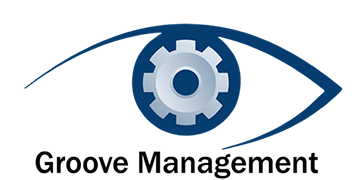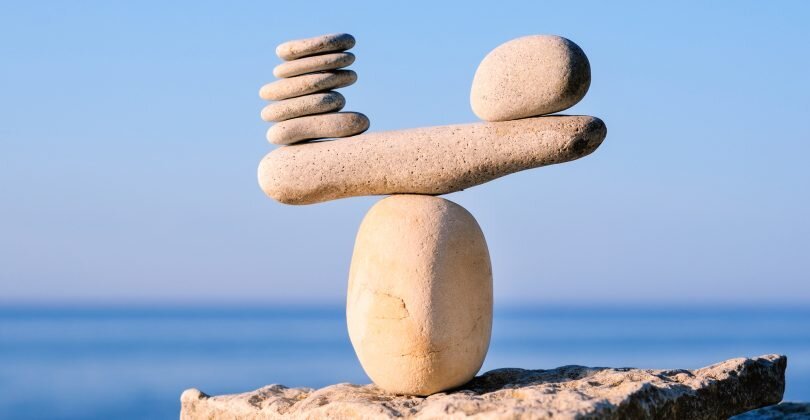Balance is an Underappreciated Competency
As we move through life we learn that balance is one of the most important yet delicate keys to happiness and success. As toddlers learning to stand and eventually walk is the first form of physical balance that we must learn, but as we grow, we find that mental balance is equally if not more important than physical balance. In working with executives, I often explore opposing forces in their work and lives. It is the quest to maintain balance that consumes so much of our time and effort without us ever really calling it out.
When I was in graduate school at American University earning my Masters Degree in Organizational Development I received a really cool gift from my classmates. They gave me an old pharmacists scale (pictured here). The scale was meant to be a reminder for me to focus on balancing my approach to life, relationships and work. Twenty years later the scale still hangs on my office wall as a reminder of the importance of balance to my life, my success and my ultimate happiness.
Short Term Priorities vs. Long Term Goals
There are several dimensions to balance that bear exploring. As a business leader there is often the struggle between short term priorities and long term goals. Too much focus on short term priorities can push the long term goals further out of reach, but if the focus is only on the long term, the business may not survive to thrive in the future. This push-pull relationship requires delicate balance and constant fine tuning. Large publicly traded organizations struggle with this even more than scrappy startups in that they are required to release quarterly earnings reports and often they must give guidance. This forces a short term focus to please Wall Street and causes many publicly traded organizations to focus too much on the here and now versus placing longer term bets that may not pay off today, but will potentially advantage the organization in the future. The best CEOs are masters at balancing the needs of the day with the desires of the future.
Encouragement and Positive Feedback vs. Tough Love
Leading people is another balancing act that requires constant fine tuning. An effective leader must balance reward, recognition and encouragement with critical developmental feedback in an ongoing attempt to maximize the performance of employees. I like to use the piggy bank analogy for feedback. Every time you provide an employee with positive feedback or recognition you are making a deposit in the piggy bank. Conversely every time you criticize or reprimand an employee you are making a withdrawal from the piggy bank. Much like a bank account you must maintain a positive balance. If you make more withdrawals than deposits, you ultimately bankrupt the relationship and the employee will likely quit. Great leaders balance tough love with encouragement. They are making constant adjustments to maximize the performance of each employee. Because all people are different, it requires an individualized and tailored approach. The best leaders are very adept at working to balance the approach with each of their employees.
Work vs, Life
One balance struggle we all face is work life balance. This has been compounded by the global pandemic which has forced offices to close and people to have to work from home. Maintaining work life balance when your home is also your office adds another layer of complexity to an already difficult balancing act. In our wired society our smartphones comingle our work lives and our personal lives. It is impossible to separate the two when you are constantly bombarded with work emails and social media updates from friends. The smartphone has further blurred the lines. There are several tactics that can be employed to help create better work-life balance. A dedicated office location in the home, separate smart phones for work and for personal, a co-working membership as a place to work, a set schedule that creates separation between work and personal time are just a few examples. I have been working with one executive who told me that without his commute to and from the office, he has trouble getting started in the mornings and difficulty shutting down the work in the evenings. At my suggestion he began taking a morning drive before work. Each day he wakes up, showers, gets dressed, eats breakfast and then goes for a 10 minute drive. He drives out of his neighborhood and around town getting into work mode and planning his day as he used to on his way to the office. He then pulls back into his driveway as if it is the office parking lot, goes into his home office and starts his day. This simple act had provided him with balance and helped him to effectively create separation between work and life.
Surfing Through Life
I am a surfer. I love the sport of surfing for many reasons. It reconnects me with nature, it challenges me physically and mentally, it gives me a reason to travel and it makes me better at the work I do. Surfing is the ultimate balancing act. One cannot remain static standing on a surfboard because the wave is in constant motion. In order to maintain balance while surfing, the surfer must be one with the board and making constant adjustments to maintain balance in a fluid environment. I love this analogy for balancing anything in life. You must approach your balancing act like a surfer approaches riding a wave. You must be completely aware of every movement and the impact of those movements on you, your environment and others around you.
The Balance Competency
I believe that balance is an underappreciated competency. You don’t read enough about great leaders and their balanced approaches. The balance competency exists and there is data to prove it, but balance is overshadowed by more visible and measurable competencies. The balance beam is a good visualization tool to help express the variable that can impact balance. To create balance on a fulcrum beam, you can either adjust the weight on either side of the fulcrum, move the weights closer or further from the fulcrum or you can move the fulcrum. That actually translates in to five variables.
The amount of weight on the left side
The amount of weight on the right side
The position of the weight on the left side
The position of the weight on the right side
The position of the fulcrum
First question is which of these variables can I control or influence? If you are the leader, it might be easier to consider yourself the fulcrum and adjust how you are leading and move yourself rather than adjusting the opposing forces. If you are one of the weights on either side, you must be willing to move in or out. Consider this simple activity.
The Balance Activity
Make a list of opposing forces in your life that require balance. Assign a weight on a scale of 1-10 to each opposing force and then determine what you can do to bring the forces into better balance.
Examples: Risk taking (3) Safety(7)
Spending(5) Saving(5)
Leading(6) Managing(4)
By keeping track of the opposing forces in your life, you can visualize what needs attention and where you are most out of balance.
Mindfulness and Balance
Visualizing your priorities and their current balance is a helpful way to identify where to exert more effort to bring things into balance. As the surfer knows, balance cannot be static because the world is in constant motion. To maintain balance you must be making delicate and constant adjustments. Being more mindful of your balance will enable you to make the necessary adjustments as you move through life.
Besides the pharmacists scale hanging on my wall I use a physical balance aid on a daily basis. I have a balance board called an Ebb and Flo board. I used it daily to challenge my balance. It improves my surfing and it also helps me think more clearly about the need to make ongoing adjustments to maintain mental balance in my life.
For the rest of the day today, be more cognizant of your physical and mental balance. What is stressing you out? Where do you feel uncomfortable? What competing priorities are impacting you? How is your health and safety wearing on you? Do you have financial stress? Combining mindfulness and the concept of balance can be very beneficial to both mental and physical health. As mentioned at the beginning of this post, balance is something we subconsciously seek, but by bringing it into your consciousness, you can impact it more directly and unlock the benefits of having more balance in your life.




